Top Rankings
Ashwaubenon School District ranks among the top 20% of public school district in Wisconsin for:
Category
Attribute
Diversity
Most diverse schools (Top 1%)
Community Size
Largest student body (number of students) (Top 1%)
For the 2025 school year, there is 1 public preschool serving 298 students in Ashwaubenon School District.
ÎÛÎÛÂþ» Preschools in Ashwaubenon School District have a diversity score of 0.54, which is less than the Wisconsin public preschool average of 0.58.
Minority enrollment is 34% of the student body (majority Hispanic and Black), which is less than the Wisconsin public preschool average of 38% (majority Hispanic and Black).
Overview
This School District
This State (WI)
# Schools
5 Schools
1,032 Schools
# Students
3,196 Students
339,535 Students
# Teachers
212 Teachers
24,694 Teachers
Student : Teacher Ratio
15:1
15:1
District Rank
Ashwaubenon School District, which is ranked within the top 50% of all 444 school districts in Wisconsin (based off of combined math and reading proficiency testing data) for the 2021-2022 school year.
The school district's graduation rate of 91% has stayed relatively flat over five school years.
Overall District Rank
#214 out of 450 school districts
(Top 50%)
(Top 50%)
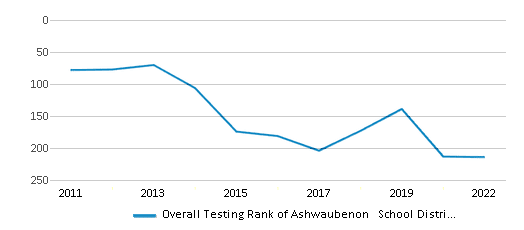
Math Test Scores (% Proficient)
42%
39%
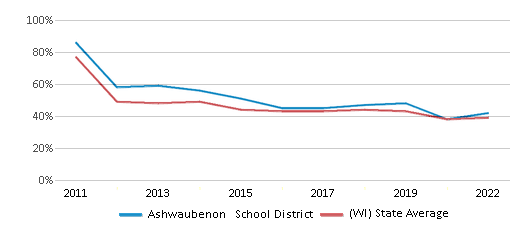
Reading/Language Arts Test Scores (% Proficient)
37%
38%

Science Test Scores (% Proficient)
51%
44%
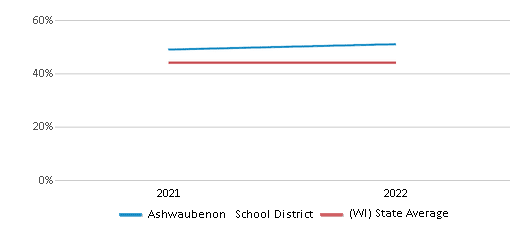
Graduation Rate
91%
90%

Students by Ethnicity:
Diversity Score
0.45
0.58
# American Indian Students
65 Students
3,435 Students
% American Indian Students
2%
1%
# Asian Students
130 Students
15,647 Students
% Asian Students
4%
5%
# Hispanic Students
248 Students
52,197 Students
% Hispanic Students
8%
15%
# Black Students
95 Students
39,149 Students
% Black Students
3%
11%
# White Students
2,343 Students
209,143 Students
% White Students
73%
62%
# Hawaiian Students
5 Students
297 Students
% Hawaiian Students
n/a
n/a
# Two or more races Students
310 Students
19,658 Students
% of Two or more races Students
10%
6%
Students by Grade:
# Students in PK Grade:
175
50,321
# Students in K Grade:
194
44,890
# Students in 1st Grade:
191
45,508
# Students in 2nd Grade:
240
45,837
# Students in 3rd Grade:
209
43,291
# Students in 4th Grade:
218
42,370
# Students in 5th Grade:
239
35,557
# Students in 6th Grade:
243
11,124
# Students in 7th Grade:
254
7,438
# Students in 8th Grade:
229
7,747
# Students in 9th Grade:
265
1,444
# Students in 10th Grade:
253
1,335
# Students in 11th Grade:
249
1,345
# Students in 12th Grade:
237
1,328
# Ungraded Students:
-
-
District Revenue and Spending
The revenue/student of $13,283 in this school district is less than the state median of $17,039. The school district revenue/student has stayed relatively flat over four school years.
The school district's spending/student of $14,007 is less than the state median of $17,011. The school district spending/student has stayed relatively flat over four school years.
Total Revenue
$43 MM
$13,869 MM

Spending
$45 MM
$13,846 MM
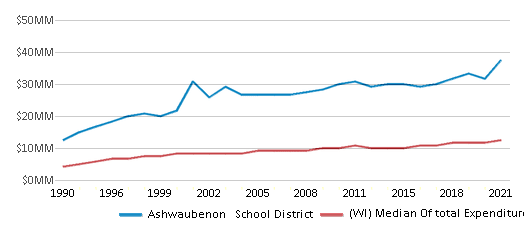
Revenue / Student
$13,283
$17,039
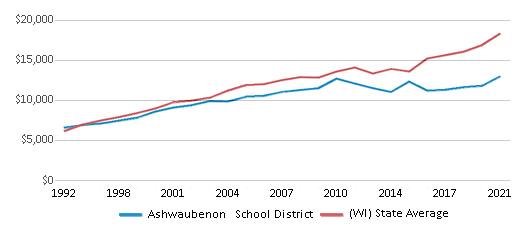
Spending / Student
$14,007
$17,011
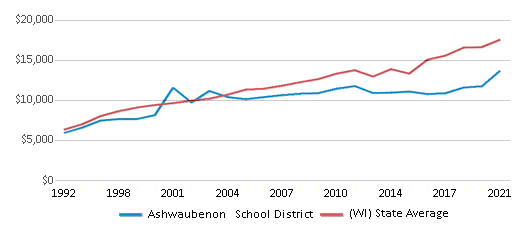
Best Ashwaubenon School District ÎÛÎÛÂþ» Preschools (2025)
School
(Math and Reading Proficiency)
(Math and Reading Proficiency)
Location
Grades
Students
Rank: n/an/a
2280 S Broadway
Green Bay, WI 54304
(920) 448-2870
Green Bay, WI 54304
(920) 448-2870
Grades: PK-K
| 298 students
Recent Articles

Year-Round Or Traditional Schedule?
Which is more appropriate for your child? A year-round attendance schedule or traditional schedule? We look at the pros and cons.

Why You Should Encourage Your Child to Join a Sports Team
Participating in team sports has a great many benefits for children, there is no doubt. In this article you will learn what those benefits are.

White Students are Now the Minority in U.S. ÎÛÎÛÂþ» Schools
Increasing birth rates among immigrant families from Asia and Central and South America, combined with lower birth rates among white families, means that for the first time in history, public school students in the United States are majority-minority. This shift in demographics poses difficulties for schools as they work to accommodate children of varying language abilities and socio-economic backgrounds.





